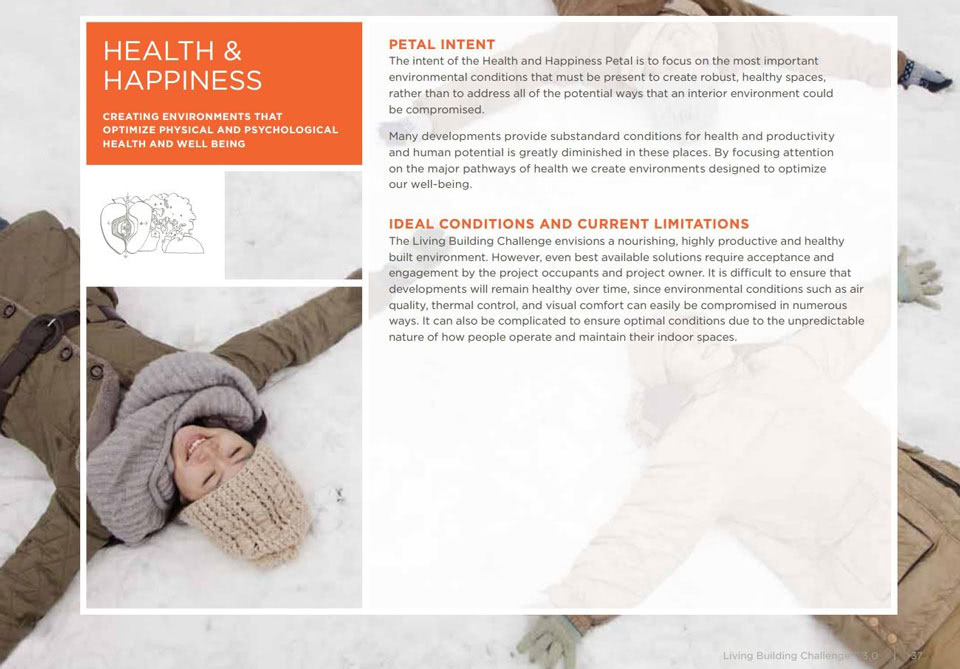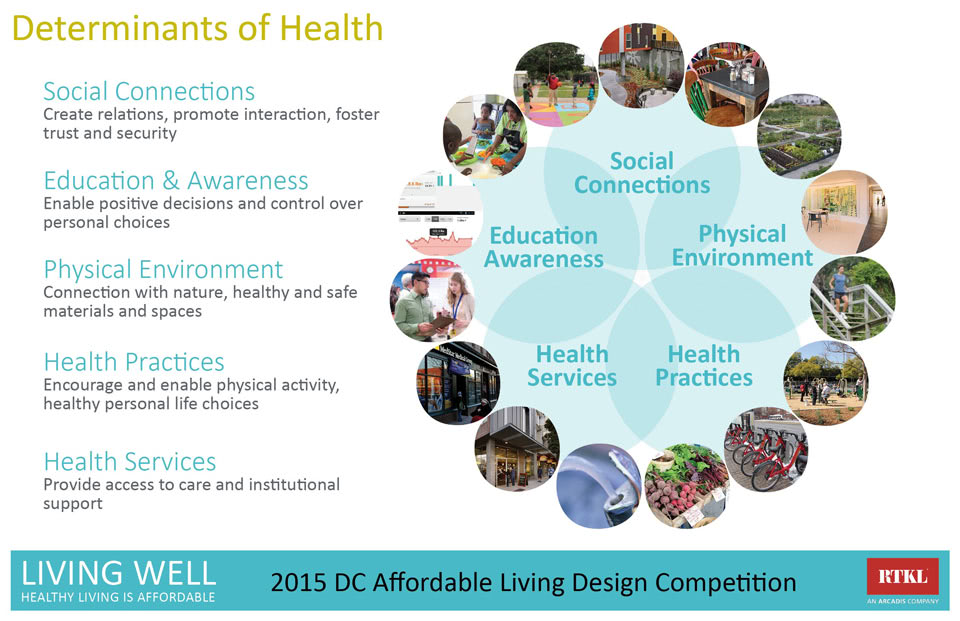
DC Affordable Living Competition: Health and Happiness
This is the third in our series of posts about the 2015 DC Affordable Living Design Competition. CallisonRTKL is working on a design for 10-15 single-family affordable townhomes in the Deanwood neighborhood of northeast Washington, DC that meets the mandates of the Living Building Challenge (LBC), widely recognized as the world’s most ambitious building performance standard. The LBC uses the metaphor of a flower deeply rooted in its place to give shape to its holistic design criteria. It is structured around seven performance categories, or “petals,” representing aspects of sustainable design: Place, Water, Energy, Health and Happiness, Materials, Equity and Beauty. This blog addresses the Health and Happiness petal.
Don’t Worry, Be Happy
Are you happy?
It sounds like a pretty simple question and when you’re asked, it’s probably not too difficult to answer. Most likely, you either feel happy, or you don’t. On the surface, happiness is a very basic human emotion.
But dig a little deeper and ask, why are you happy? Chances are your state of happiness—or unhappiness—is caused by some combination of factors related to your health, personal life, and the influence of your physical environment. If your family and friends are happy and healthy and you have a good relationship with them, then you tend to be happier and more secure. If you feel uncomfortable in your job and concerned about financial matters, then you most likely experience a higher degree of stress and uneasiness. If the weather is nice and you enjoy regular physical activity and outdoor leisure, your body responds with increased levels of energy and satisfaction. These examples, while simple, demonstrate how our lifestyle is impacted by both internal and external factors. How we experience and respond to those factors can play a large part in our pursuit of health and happiness.
Health and Happiness from CallisonRTKLtv on Vimeo.
Health and Happiness Petals
The Living Building Challenge defines Health and Happiness through three imperatives: Civilized Environment (H&H Imperative 07), Healthy Interior Environments (H&H Imperative 08), and Biophilic Environments (H&H Imperative 09). These Petal imperatives aim to ensure that the building or development under design will promote occupant wellness in each of these broad categories.

Living Building Challenge – Health and Happiness Petal, Courtesy of the International Living Future Institute
The Civilized Environment imperative challenges the project to “improve occupant health by providing a direct connection to the outdoor environment and stresses access to light, views, and fresh air to occupied spaces. The Healthy Interior Environment imperative promotes safe and responsible spaces through its objective of “improving occupant health by reducing or eliminating indoor pollutants.” The Biophilic Environment imperative reinforces the Living Building Challenge’s basic premise of building and living in a way that keeps us in tune with nature by promoting designs that “bridge the divide between natural and built environments.”
Determinants of Health
A 2004 study by York University of Health Policy and Management identified fourteen broad living conditions that influence the health and wellbeing of citizens. They call these factors “determinants of health.” When our project team examined these through the lens of housing, community and wellness, we identified five determinants that could be applied as general guiding design concepts to promote health and happiness, specifically within the context of an an affordable living community:
Social connections: how can community planning encourage social interaction, build relationships, and foster trust and security between residents?
Education: how can a built environment and community network enable positive decisions and control over personal choices?
Physical environment: how can safe materials, access to healthy spaces, and a connection with nature promote a physical and mental wellness?
Personal health practices: how can the built environment encourage and enable physical activity, a biophilic existence, and healthy life practices?
Health services: how can a community and their partners provide and promote accessible health care and institutional support to the residents?
In response to the 2015 DC Affordable Living Design Competition, our team approached the design process with the intent to make health and happiness a guiding principle. By engaging with the Deanwood community and connecting these broad determinants of health to specific issues identified as priorities by local citizens, our final design will aim to promote health, wellness, and happiness in a manner that is tailored to Deanwood residents and their unique needs.
For instance, at a recent Deanwood Citizens Association Meeting, many residents expressed predominant concern for the neighborhood youth. According to those present, many young people in the community are left unsupervised for long periods of time outside of school hours, leading to higher rates of truancy, drug use, and crime. While there are many factors beyond the scope of design involved in addressing an issue this complex, we have to ask ourselves: could housing and urban planning play a role in promoting healthier outcomes by creating neighborhoods with active, safe, and well-connected public spaces that encourage increased activity, visibility, and personal interaction? Could housing be programmed to accommodate a mix of unit types, prices, and generations to support a range of lifestyles, as well as opportunities for mentoring and relationship building?
It’s our hope that our design will present innovative solutions that will encourage social interaction, stewardship, active lifestyles, and expanded economic opportunities—proving that a healthy and happy lifestyle provides residents and the larger community with both immediate and long-term benefits. In the process, we’ll expand the definition of affordable living to include more than just reduced rent and utility bills. A truly affordable lifestyle is also a healthy lifestyle with inclusive access to open space, quality food resources and comprehensive transportation options enjoyed by a community of stakeholders who take ownership and pride in their space.
Cover image: fabits.com

